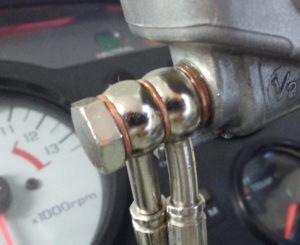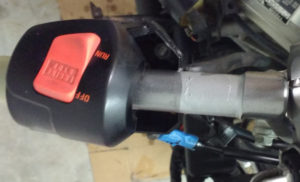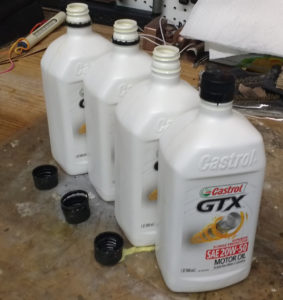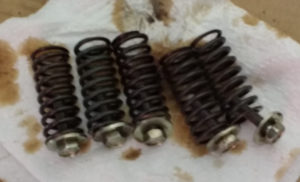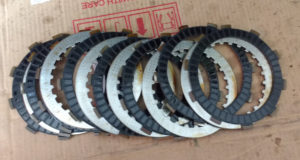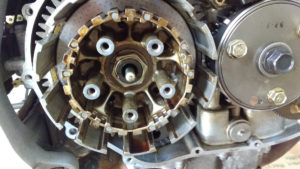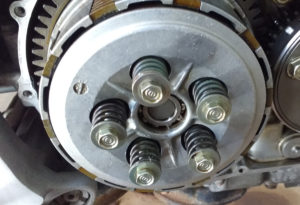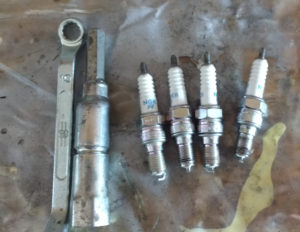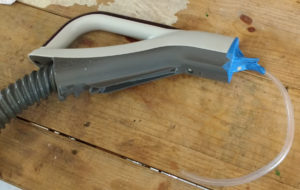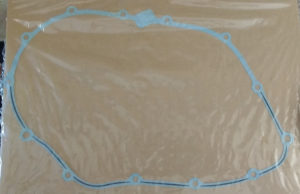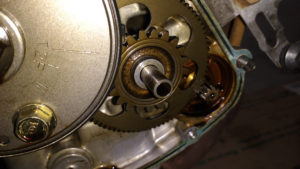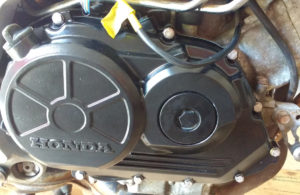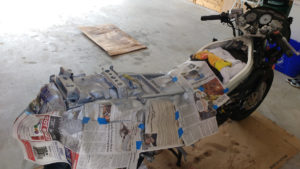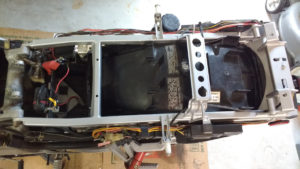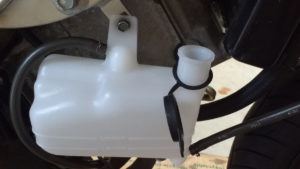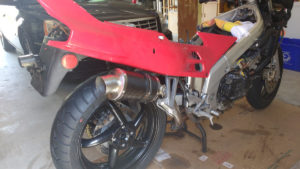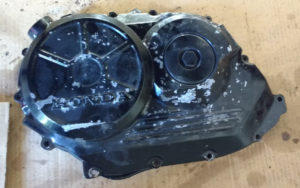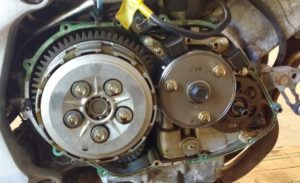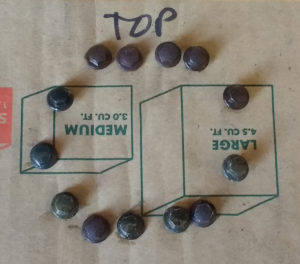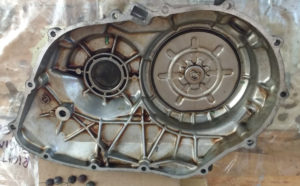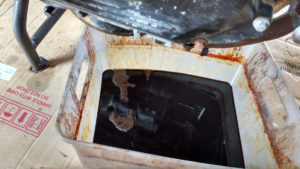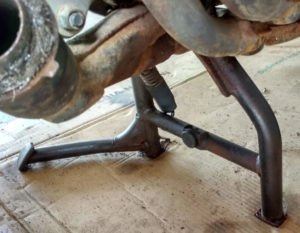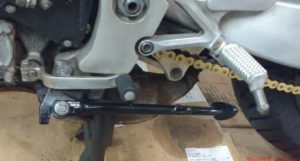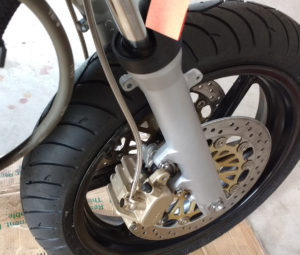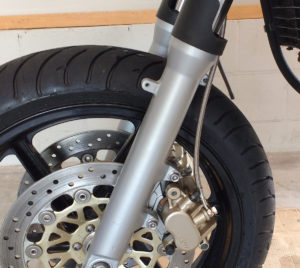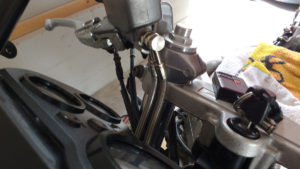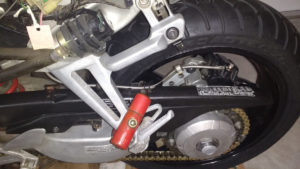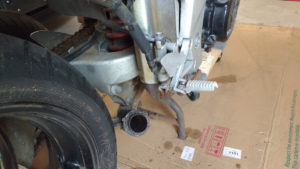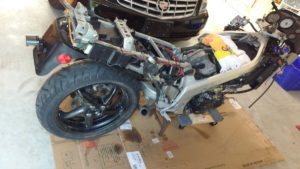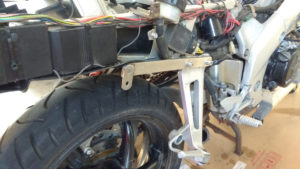Uploaded updated checklist [V10].
Progress today
Installed the brake master cylinder and lever assembly on the right clip-on. Reconnected the two brake lines and again attempted to bleed at calipers with the Mityvac. Still got no pressure with the bleed nipple open. Then tried manual technique of pumping lever and then opening bleeder. After a couple of cycles, I noticed leakage – fluid pushing out of the banjo bolt – at the master cylinder end. It looked like it was coming from between the two hose fittings.
Took the assembly apart and replaced the copper washers. As I was doing that, it looked like the bolt needed an extra washer at the cylinder end to make a good seal – like the threads were not seating all the way. Added 4th washer and buttoned it all up again.
Filled reservoir, again applied the bleeder, and … success. No more leak. Had pressure and was able to pull fluid. Did both sides with the Mityvac, then a couple of cycles each manually with the lever. Now have a good firm lever, and piston action at both calipers.
Reinstalled front brake switch on master cylinder [still need to attach wiring – after right switchgear assembled].
Temporarily pulled the brake master clamp off the right clip-on and masked/spray painted the metallic matte nickel over scratched areas on the bar under and near where the master attaches.
Lastly, refilled the bike with engine oil, using about 3.3 quarts of the Castrol 20W-50.

